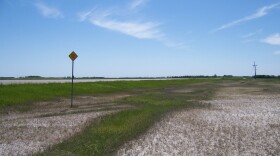Many newspapers and other media will run stories about the leaves turning color on the trees before falling. Many of these news items will explain how chlorophyll breaks down, and the other colors (pigments) that were there all along become visible. They may compare the color change to “removing the chlorophyll mask” from the leaves.
There are several of these pigments, or more accurately “accessory” pigments, and they serve a variety of functions. Common examples include the bright colors of flowers and fruits that are so important in attracting pollinators and seed dispersers. But these pigments also serve other functions in leaves.
Remember that the color of an object is largely the color of light “reflected.” Leaves are green, because of the abundance of chlorophyll, and chlorophyll doesn’t absorb much in the green (and yellow) portion of the spectrum. That’s not very efficient use of sunlight. If you think of leaves as “light harvesters,” it would be like having a combine with about one-fourth of the header missing.
Some of the accessory pigments can absorb light that chlorophyll can’t, (i.e. green, yellow) and pass that energy on to chlorophyll for photosynthesis. As a result, the plant can utilize light from more of the spectrum. Other accessory pigments function as anti-oxidants which help reduce cell damage or death resulting from various “oxidation” processes.
Although the leaves do fall from the tree, they more accurately abscise or get cut off. It is a hormonally controlled process by which an abscission zone forms at the base of the leaf stalk or petiole which contains tissues that function in separating the leaf from the plant. There are two layers of cells involved in the leaf being shed. A separation layer near the base of the petiole becomes weakened due to enzymes that break down the cell walls.
Meanwhile an adjacent protective layer at the base of the petiole changes to form a protective cover at the point of attachment after the leaf is shed. As time passes the leaf become poorly attached, perhaps only held on by a few vascular bundles. Eventually the leaf breaks off and falls, often on a windy day. Once the leaf has fallen, a protective leaf scar remains on the twig and may be easily identified. If one looks closely at the leaf scar, one may even be able to see the old vascular bundles.





